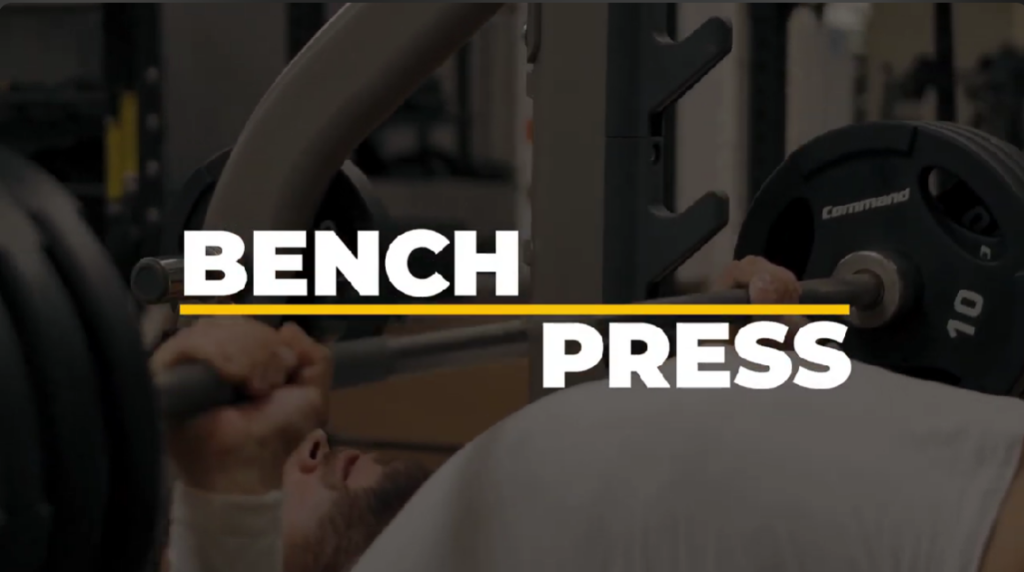
Is shoulder pain sabotaging your bench press gains? If so, you’re not alone. Many fitness enthusiasts face this hurdle, often unaware that small adjustments can make a world of difference. This blog dives deep into common mistakes compromising your shoulder health during bench workouts. We’re armed with solutions, from crafting the perfect warm-up routine to refining your bench setup, grip, and adjustments tailored for comfort and safety. Let’s uncover these secrets to unlock pain-free, effective bench workouts.
Importance of Proper Warm-Up
Let’s paint a common scenario: shoulder pain haunting your benching sessions. The antidote? An artfully crafted warm-up routine. We’ve meticulously developed an upper body warm-up routine (check the video below) precisely engineered to establish the bedrock for seamless, pain-free benching. It’s the magic wand that unlocks the gate to effective bench sessions.
Setting Up Your Bench
Now let’s talk about setup precision. It’s crucial to emphasize the importance of precision and personalization in setting up your bench. The focus is on experimenting and adjusting until you find what feels like the “sweet spot” for your body and performance. Here are the things you should always consider in setting up your bench to avoid injury and have a pain free workout.
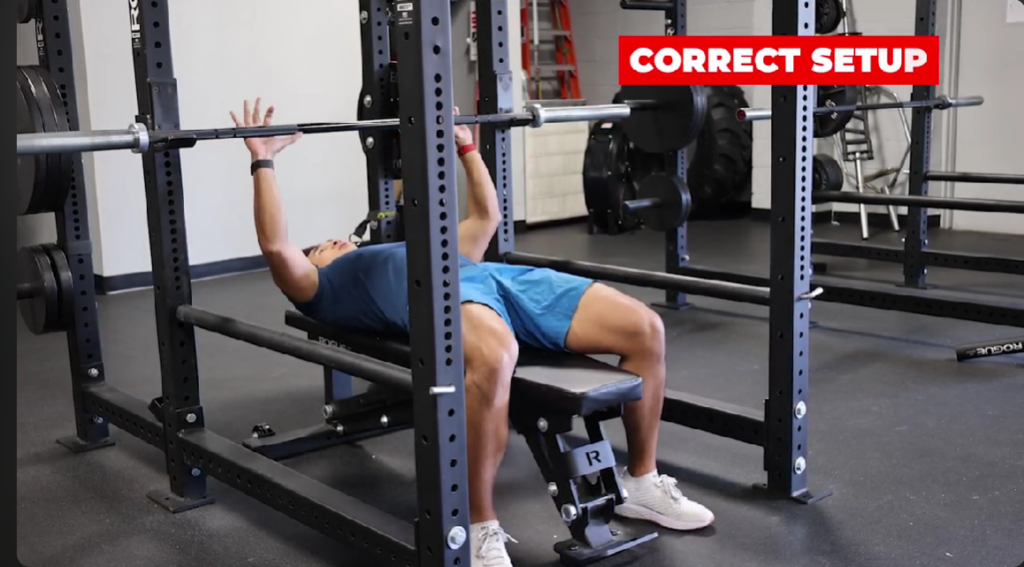
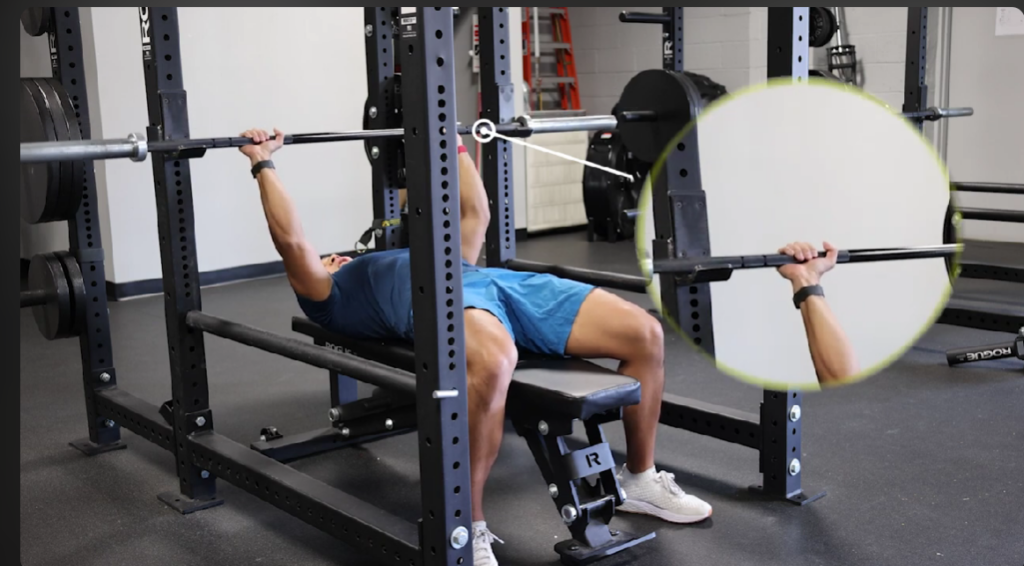
- Height and Unrack Level: The height at which you set up for your workout matters. It shouldn’t be too high or too low; finding the right unrack level is crucial for comfort and stability.
- Body Positioning: Your position on the ground or your groundwork is vital. To maximize your performance, focus on driving force through your lower body, ensuring your feet are stable and engaged, activating your core, and keeping your buttocks engaged for stability and power.
- Grip Customization: The grip you use during your workout is a personal choice. Experimentation is key to finding what works best for you.
The Ideal Body Position
For an ideal body positioning you should utilize the lower body for stability and power. Follow this guide to achieve the ideal body position for a safe and pain free bench workout.
- Root Your Feet: Ensure your feet are firmly planted on the ground throughout the lift. This grounding provides a stable foundation for the exercise. It helps in distributing force evenly and allows for a more powerful push during the lift.
- Engage the Buttocks: Squeeze your buttocks to engage your glute muscles. This engagement not only stabilizes your body but also enhances the transfer of power from the lower body to the upper body during the bench press.

- Use Plates for Elevation: If you struggle with reaching the ground comfortably or if you’re on the shorter side, using plates under your heels can be beneficial. This elevation assists in achieving better footing, optimizing your body positioning for the lift. It also facilitates a stronger push against the ground, enhancing lower body involvement and overall stability.
- Maximize Lower Body Power: By focusing on grounding your feet and engaging your buttocks, you’re tapping into the strength of your lower body. This not only aids in lifting heavier weights but also reduces the risk of strain on the upper body by properly distributing the force generated from the lower body.
Adjust Your Grip
If you are feeling any discomfort, adjust! Don’t push through pain. Adjusting your grip isn’t a one-size-fits-all scenario. It’s about finding what works best for your body to ensure comfort and safety while performing the bench. Experimenting during warm-ups and being mindful of proper form and grip can significantly enhance your workout experience. Here are the things you should consider when adjusting and finding your perfect grip.
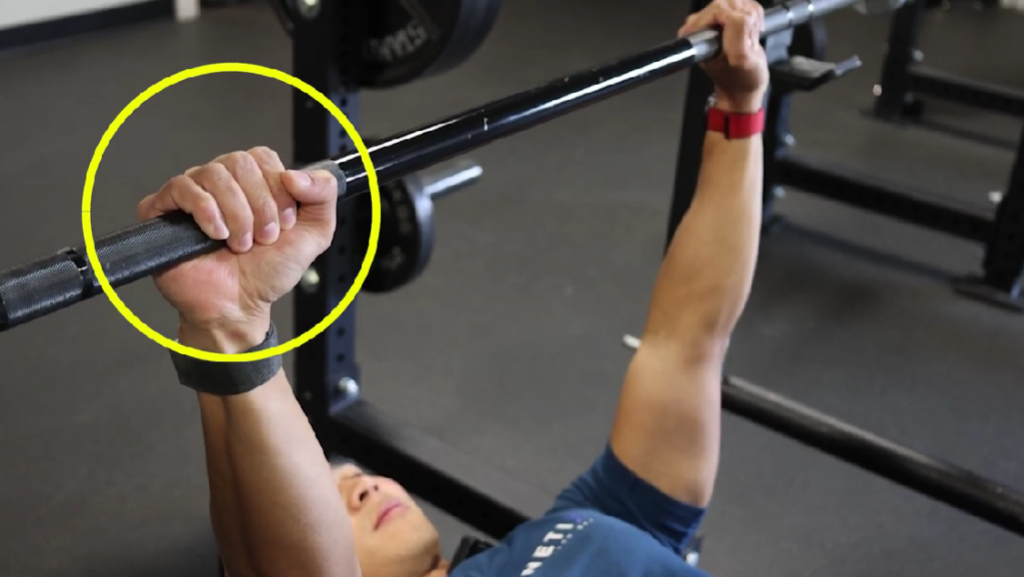
- Grip Length: Experimentation is key here. Start by placing your hands on the bar at a width that’s approximately the distance of one thumb away from the smooth center of the bar. This width often offers a good starting point. However, it’s crucial to understand that individual body mechanics and comfort levels vary. Some might find a wider grip more suitable, while others might prefer a narrower grip.
- Personal Preference: Listening to your body is vital. Shoulder discomfort can arise if the grip is too wide or too narrow. So, while experimenting, pay attention to any strain or discomfort in your shoulder joints.
- Thumbs Around the Bar: Ensuring your thumbs are wrapped securely around the bar is a fundamental safety practice. It significantly reduces the risk of accidental slips or the bar rolling off your hands during the lift.
Modifications for Shorter Height
For individuals with shorter height, adjusting bench press techniques becomes crucial to ensure comfort and prevent potential discomfort or shoulder irritation during the exercise. Making modifications tailored to your body type can significantly enhance your bench press experience. Here are things you should consider to properly modify the workout.
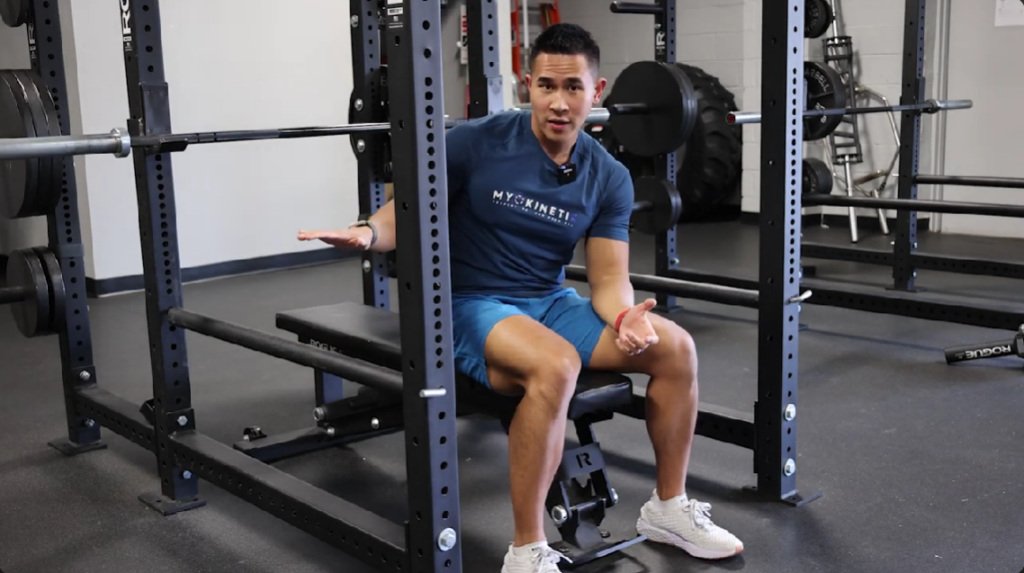
- Bench Height Adjustment: Lowering the bench can be advantageous. A lower bench position reduces the distance the bar needs to travel during the exercise, allowing for a more natural and comfortable range of motion.
- Modified Floor Press: Alternatively, a modified floor press can be highly beneficial. This variation involves performing the bench press while lying on the floor or using a bench set at a height that restricts the range of motion.
- Control Elbow Movement: Maintaining the angle of the elbows at or above 90° during the bench press helps prevent overextension of the shoulders, especially for shorter individuals.
Ensuring Safe Workout Practices
Maintaining safe workout practices during bench pressing or any exercise is crucial for a sustainable fitness journey. The mantra “no pain, no gain” doesn’t cut it. Exercise within a pain-free range highlighting control and proper form with controlled weights to ensure longevity in your fitness journey. Here are the things to consider for a safe and pain free bench workout.
- Pain-Free Range of Motion: Pain isn’t a sign of a good workout. It’s vital to perform movements within a range that doesn’t cause pain or discomfort. Controlling the motion helps in preventing injuries and ensures a safer workout.
- Form over Weight: Instead of trying to lift the heaviest weights possible, prioritize doing exercises correctly. Form matters more than the number of pounds lifted. When you manage the weight you’re lifting, you reduce the chance of hurting yourself.
Maintaining a consistent and safe workout routine contributes to long-term fitness goals. Injuries or discomfort due to improper form or excessive weight can hinder progress and even lead to setbacks. By prioritizing safe practices, you’re promoting a sustainable approach to exercise that supports your long-term fitness journey.
Check out this video with Dr Natty for a safe and pain-free bench workout!
Conclusion
Your ability to bench press well shouldn’t mean enduring shoulder pain. By applying these tips, you’re not just improving your bench press technique; you’re also protecting your shoulders. It’s not only about lifting heavy weights; it’s about lifting wisely. Focus on your form, adjust your setup to fit you, try different approaches, and pay attention to what your body tells you. These changes will turn your bench press routine into a pain-free, empowering journey. Here’s to lifting stronger and keeping your shoulders healthier!
At Myokinetix, our mission is to empower everyone regardless of their fitness level to embrace workouts that are not just effective but also free of pain. We’re dedicated to fostering active, healthy lifestyles with our team of experts who create personalized guides crafted precisely for your unique needs. We believe in the power of personalized approaches, ensuring you have the right techniques, routines, and equipment for a workout that’s both safe and optimized for your goals.
Our goal is to guide you towards an exercise routine that’s not just efficient but also enjoyable, paving the way for a healthier and more active life!
Book a call with us today to start your journey!
